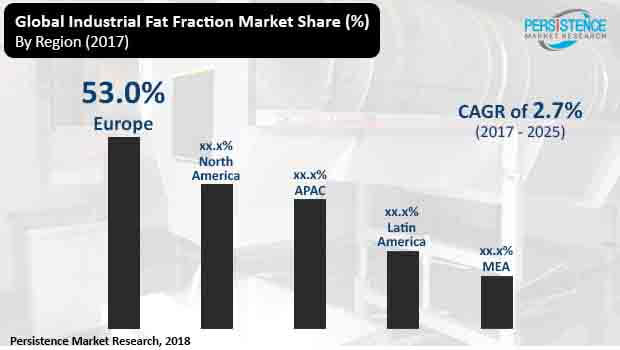Industrial Fat Fraction Market Segmented By Blended Products with Value Added Fats, Blended Products with Different Melting Characteristics
Industry: Food and Beverages
Published Date: March-2018
Format: PPT*, PDF, EXCEL
Delivery Timelines: Contact Sales
Number of Pages: 179
Report ID: PMRREP22528
Increasing incidence of health issues such as diabetes, obesity, and blood pressure is prompting consumers to maintain a healthy lifestyle. Thereby, they are more inclined towards the consumption of functional foods. Furthermore, with increasing penetration of the Internet and smartphones globally, consumers are engaged in finding the origin, ingredient, processing etc. of the product before making a purchase.
Additionally, consumers also make price comparisons, and this trend is more prominent among millennial consumers and is also spreading across several regions. Growing awareness among the millennial population regarding the harmful effects of food additives, antibiotics, and chemicals has increased the adoption of organic products, especially in developed regions, and this is expected to trigger the demand for industrial fat fraction in the coming years.
Last year was momentous for Europe, as the United Kingdom voted to leave the European Union (EU). Pressures exerted by the Greece debt crisis and influx of refugees from the Middle East continue to pose challenges to policy and growth. Although the continent is in turmoil, many experts are of the opinion that the current situation can also offer conditions for course correction. There has been clamor for reforms in the EU, and as the threat of disintegration looms large, a transformation might be in the offing.
Angela Merkel’s weaker-than-expected victory in Germany could create challenges for greater integration and collaboration in the EU. The consumption of certain products has altered after the political changes in the region. This has resulted in a high usage of industrial fat fraction in the region as Europe is one of the largest consumers of butter in the world and the growing awareness among consumers along with the need to adhere to the policies and regulations is expected to benefit the market in the long run.
The business environment in Europe remains positive with many countries in Western Europe ranking highly on the World Bank’s ‘Doing Business’ index. The United Kingdom, France and Germany are ranked among the top 30 countries in the index. However, the business environment is in stark contrast in Eastern Europe vis-à-vis Western Europe.
The EU has endeavored to encourage cross-border business activity; however, the rising tide of protectionist measures can stymie investor confidence. The proliferating investments are expected to benefit industries such as bakery and confectionary, in turn supporting the growth of related industries such as industrial fat fraction.

The food and beverage industry in North America remains on a steady pitch, owing to the stability in consumer spending on food and beverage products. In the U.S., changes in the Food Safety Modernization Act (FSMA) can mean that America’s food safety laws will focus more on prevention of food contamination, rather than responding to entitlements of food adulteration.
Growth in awareness on the role of food in health and well-being has made consumers in the U.S. and Canada more attentive towards the ingredients used by manufacturers. The preference towards healthy foods has made North American food and beverage companies develop new product portfolios. This factor is expected to trigger growth in several industries, one of them being the industrial fat fraction market.
The global industrial fat fraction market has been segmented on the basis of the following:
| Attribute | Details |
|---|---|
|
Region |
|
|
Product Type |
|
To know more about delivery timeline for this report Contact Sales
